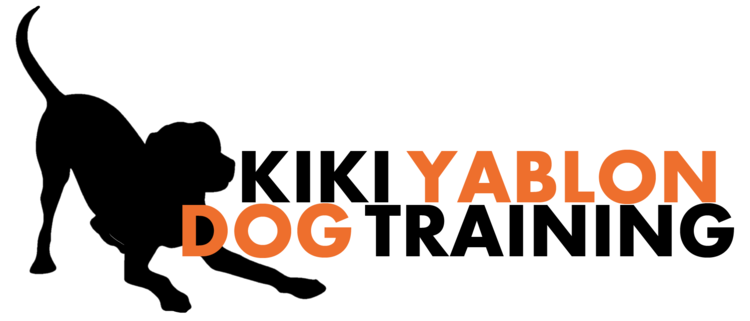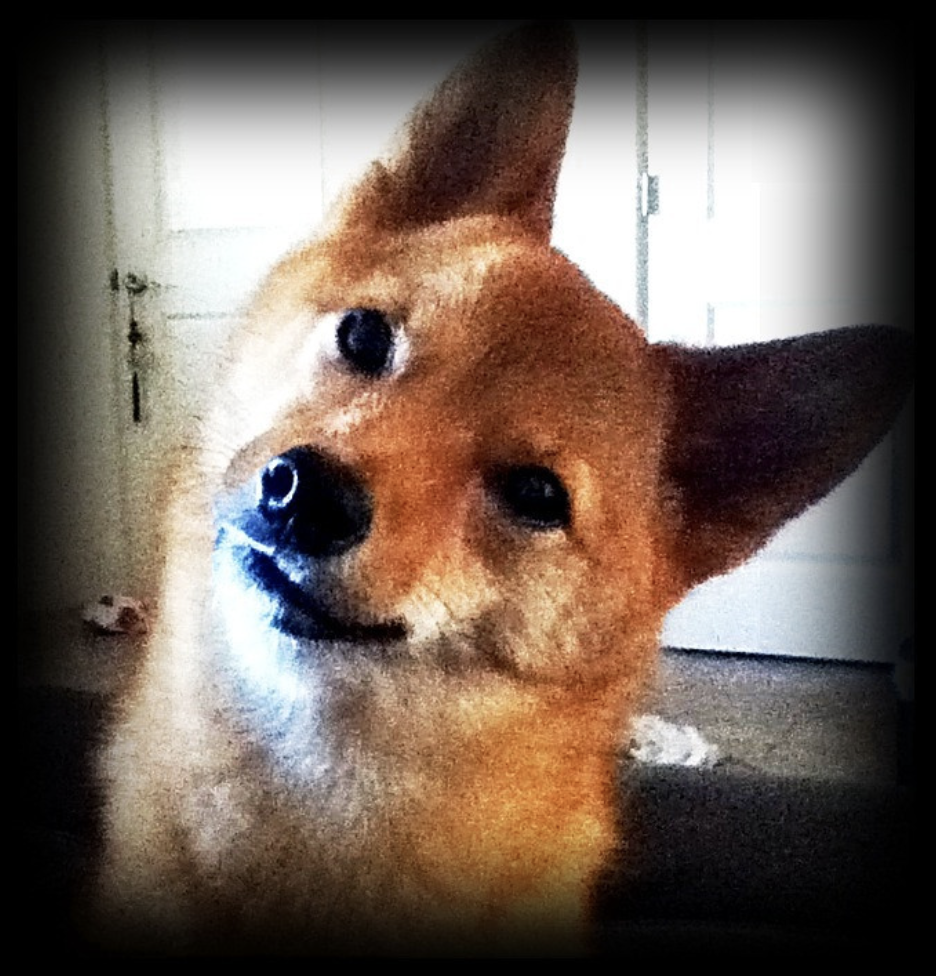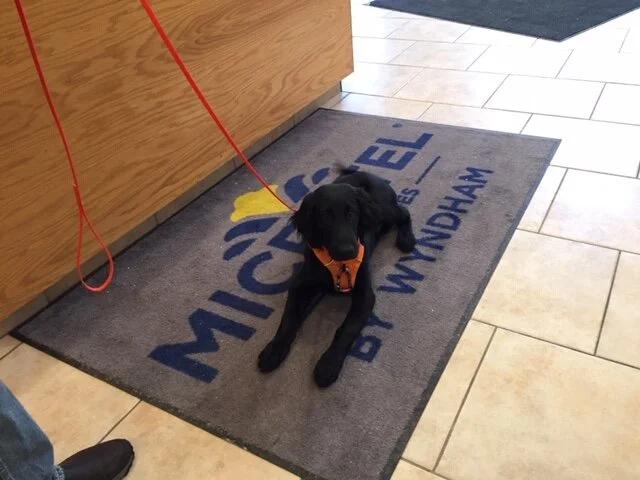photo: Taro the Shiba Inu, CC by 2.0
In an October 12 blog post for Psychology Today, “Trainers Worry About False Claims That Dogs Lack Emotions,” evolutionary biologist Marc Bekoff reports that some dog trainers (and at least one ethology professor) have written to him to express dismay at claims supposedly originating from neuroscientist Lisa Feldman Barrett and behavior analyst Susan Friedman that dogs do not have emotions.
I can’t speak in depth about Feldman Barrett’s work, as I still haven’t finished her book, How Emotions Are Made (though Bekoff seems to indicate he hasn't read it either). But I teach fellow animal professionals about behavior analysis under the mentorship of Susan Friedman. As many of her students have already pointed out on social media, there are some grave misconceptions about what she teaches in the post.
Bekoff quotes an e-mail from a dog trainer, identified only as well-known:
“Susan Friedman, for instance, insists that terms like ‘protective’, ‘pushy’, ‘playful’, ‘reserved’, ‘grumpy’, ‘extroverted’, ‘curious’ etc. should never be used when speaking about animals, with these being examples of improper verbiage...It is a powerful force in the dog training world right now that's moving away from an integrated understanding that sees the whole phenotype of the animal and considers both proximate and ultimate explanations for behavior."
Bekoff then links to a longer list of adjectives included in one of the free handouts about behavior assessment available on Friedman's website. In the handout, Friedman advises that these words don’t “describe behavior in a functional way.” Bekoff writes that he can't understand why she says these words are "functionless."
First, I don’t think anyone who has taken any of Friedman’s courses or attended her seminars could report that she has said that animals do not have emotions. Should you be interested in her perspective on emotions (and have $60 to spend well), you can watch her give a 90-minute lecture on the subject to an audience of animal trainers, drawing on a multidisciplinary basis of evidence, on ClickerExpo’s video-on-demand site.
Second, the reason the words on the worksheet are described as “not functional” is not that they serve no purpose. What Friedman means here is that these words do not describe the function of the behavior.
In behavior analysis, the function of a behavior is more important than the form, which means it is never completely described without reference to its context. We all seem to agree on this. Context is what Bekoff suggests that we look at to determine how animals are feeling:
“I've argued that there's chimpanzee joy, dog joy, and human joy, and elephant grief, gorilla grief, and magpie grief, and even among members of the same species (conspecifics), these feelings and the ways in which they're expressed may vary. However, there's little to no doubt about what the individuals are feeling when their behavior and the context in which it's observed are detailed.”
Bekoff almost sounds like a behavior analyst here: The form of “grief” looks different not just between species but between individuals within a species, and so the only way we can reasonably infer that, say, crying is an expression of “grief” in humans is by seeing it in context. UPDATE: Case in point:
Then again, how are we to even tell whether crying in the context of a friend’s recent death is “grief” and not, say, “regret” at not having spent more time with her before she passed? We could ask, but how will we then verify that the answer (itself behavior, and influenced by its own conditions, let's say a public setting) accurately represents the private behavior of the crying person?
Describing what an animal is doing, rather than what we perceive it to be, what we think it is feeling, or even what it says it's feeling, is what allows us to locate the behavior within the conditions that are likely responsible for it. Immediate conditions are one of the three main factors influencing behavior in the behavior analysis model, along with past experience and genetics. And they are notably the only one of the three we have any control over.
So, just to be clear: The description of what the animal does, under what conditions, to produce what outcome, is a functional description in that it describes the function that the behavior serves. Not in that it functions as a description, though . . . that too.
Why is a functional description important? A couple of examples from my own work:
If you tell me that your dog “hates guests,” before I give you any advice, I’m going to ask “what does that look like? What does the dog do? When he does it, what do people do in response?”
If you tell me that when people come in the house, if the dog stiffens, lowers his head, peels back his lips, and growls, then people then stop approaching him, we can probably make an educated guess that he is behaving to avoid proximity to people. Do we want to agree to call that “hate?” What about “fear”? Or is it “dominance,” as some would argue?
These labels are important, not because they describe anything other than behavior in conditions, but in that they may influence how the owner (or trainer) will attempt to address the problem. They may be useful in engendering empathy (and yeah, we have to ask "what does that look like?"). They may be harmful in encouraging solutions directed at the “hate.” But they do not add anything to the understanding that if we want the dog to change his behavior, we will need to change the conditions so he can maintain distance from guests without threatening them, and further, so that maybe maintaining distance from guests will no longer be an outcome worth growling for.
On the other hand, if you tell me the dog “hates” having guests over, and when the specifics are investigated it turns out that he barks repetitively in a high pitch at you whenever you sit on the couch with a guest, and each time he does, you get up and give him a new bully stick or Kong to work on, we’re going to make some different environmental changes from the first scenario.
Is it any more useful to say a dog (or for that matter a person) behaves because he “hates guests” than to say he behaves because he is "pushy"? (For the record, Friedman has never said such words should never be used to describe animals; what she has frequently said is that labels for behavior—of animals and humans alike—can be useful, but only once all stakeholders know what they're shorthand for.)
In both cases above, I will need to know: what behavior are we talking about, and under what conditions?
Do we disregard emotions by focusing on behavior we can observe and measure, instead of what we presume to be in the dog's mind or brain? No, because the behavior we can observe and measure is the same behavior that we use to infer emotions. When the behavior changes, we look at it under its new conditions and infer different emotions.
Another misconception: The well-known trainer refers to what trainers are being taught of applied behavior analysis as “methodological behaviorism.” That’s incorrect. Simplified, methodological behaviorism (a) generally assumes that there are processes occurring in some unseen dimension, e.g., the so-called mind, that mediate between the environment and behavior and (b) that since these processes can not be observed or measured, they are not appropriate subject matter for a science of behavior, and are to be set aside. (My source on this is here.)
B.F. Skinner’s radical behaviorism (radical as in thoroughgoing, far reaching, and fundamental, not as in extreme) distinguished itself from methodological behaviorism in part with the gorgeously parsimonious assumption that private behaviors, including those we might call emotional, are still behaviors, and that though they are hard to verify and sometimes hard to identify even within ourselves (do I feel sick? Or am I just tired?), they are subject to the same influences as public behaviors. They are obviously important to the organism who experiences them, who can observe them, and a thorough behavior science is obligated to try to account for them. The pioneers bringing ABA to animal trainers are, to my knowledge, radical behaviorists. (Friedman addresses other misconceptions about Skinner and behaviorism in another video on demand here.)
Radical behaviorists also certainly take into account phenotype, contrary to what the well-known dog trainer asserts, and both immediate and distant explanations for behavior. In fact, Skinner wrote a lot about evolution. He saw selection of behavior within an individual’s lifetime as both similar to and intertwined with selection of behavior over a species’ existence, and it was from this perspective that he strove to account for complex human behavior and its possible origins (see, for instance, The Evolution of Behavior).
The question among dog trainers who operate with more than a casual knowledge of behavior analysis, then, should not be whether dogs have emotions.
Bekoff suggests that we ask not whether emotions have evolved, but why, which is an interesting question whether you’re an evolutionary biologist or a behaviorist. Skinner sure thought so.
But we might first have to answer this one: What are emotions?
Is there any evidence that they exist as something separate from behavior and context?
How do we come to an agreement on what behaviors go with which labels? Is a stiff upper lip “stoic” or “angry”? How can we verify that a person who says he is "happy" and smiles and a person who says she is "happy" and weeps are experiencing the same private behavior?
If we can't find emotions in the mind (which probably doesn't exist), or in the brain (Feldman Barrett argues convincingly here, in lay terms, that emotions don't live in particular brain regions), or in consistent facial expressions (Feldman Barrett again presents falsifying evidence), or anywhere other than in the behavior we observe and the context we observe it in, does it exist anywhere else? And if not, can emotion "underlie" behavior, as dog trainers so often say?
One last and more practical question: What should dog trainers focus on if they want to ethically and effectively change behavior or, allowing for the possiblity that they’re distinct entities, emotions? What is in our power to directly change?
The concept of functional description that Bekoff misunderstands is a key component of functional analysis—which, on the subject of ethical behavior change, has been correlated in human behavior with a marked shift in human practitioners’ choice to use reinforcement-based procedures over punishment. As behavior analyst Gregory Hanley writes, it is a "humanistic" approach: it “dignifies the treatment development process by essentially asking the [organism] why he or she is engaging in problem behavior prior to developing a treatment.”
And while observation of behavior can arguably be supplemented with actual “asking” in humans (as unreliable as their answers may be), the observation of behavior in conditions is all we have with animals. So it’s critical that before we agree on whether and what to label it, we see it with clear eyes.





